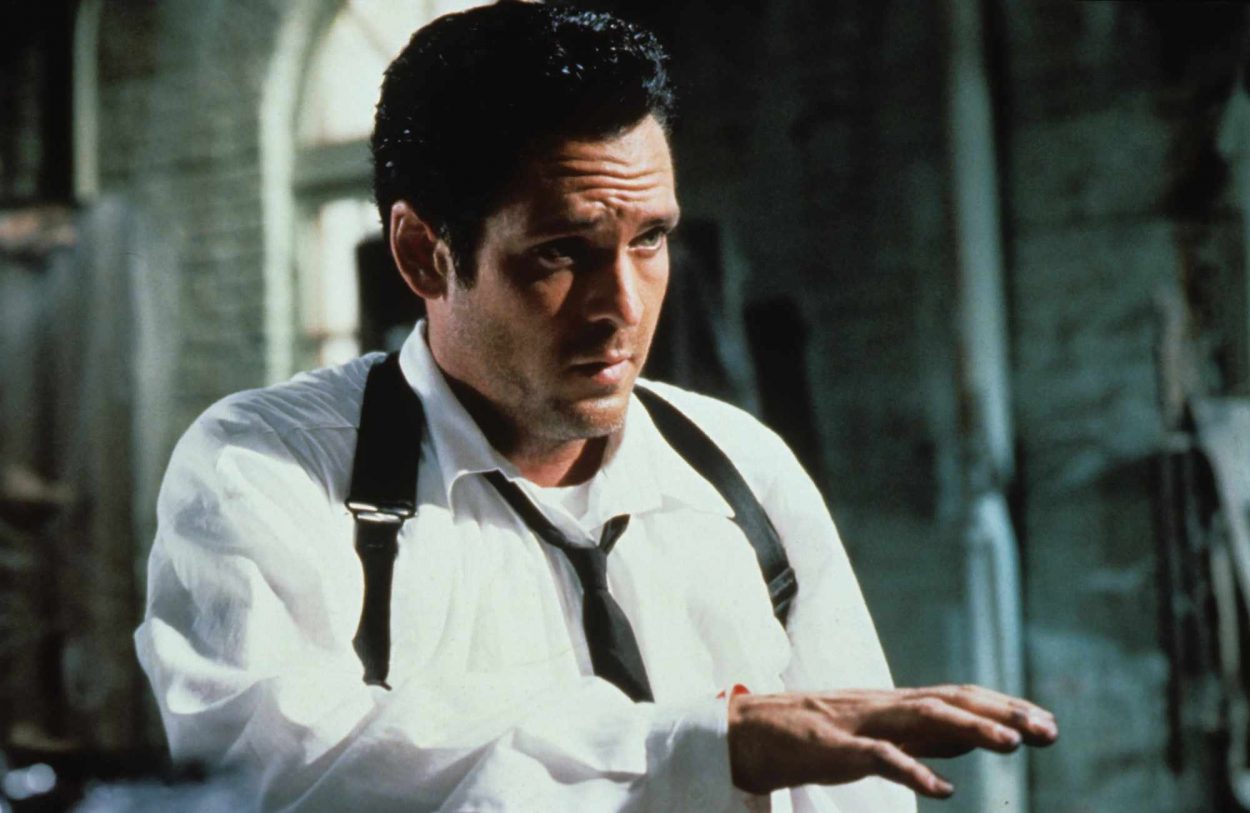“I’ve been put into this bizarre category called body horror, but I’ve never used that term myself. Now the one I like best is when someone said that Cronenberg is the king of venereal horror. It’s a small kingdom, but it’s mine.” – David Cronenberg
I’ve always wondered what it’s like to be a man/male-identifying human who watches David Cronenberg movies. I can tell you, from personal experience, it’s very different as a ladyperson. Cronenberg’s work is dynamic. It contains complex characters and has contributed greatly to the modern horror genre, even if the lion’s share of today’s horror is far more simplistic and gender stratified than any Cronenberg movie could ever be. Cronenberg’s focus is consistently feminine, perhaps even feminist.
While some might find his art disturbing, what should shock no one is that this soft-spoken Canadian filmmaker’s deepest desire as a young man was to be a doctor or a scientist. That deep fascination with life, death and the biological instinct is ever present in the cinematic work he has produced, from Shivers (1975) to Map to the Stars (2014). Many audiences have critiqued his more recent work, saying that it “just doesn’t feel as Cronenbergian” as his earlier films. This appraisal is problematic. There may not be as much blood or disease in Cosmopolis (2012) as Rabid (1979), but step back – the vaginal cavity endemic to the Cronenberg universe has, literally, gotten deeper. Graduating from the bloody, gashy opening of his ’70s/’80s oeuvre, it has become a fully fleshed out techno-womb in this work, a limo-uterus that cradles the Robert Pattinson character for the length of the film. Cosmopolis is just as much about pussy as Rabid.
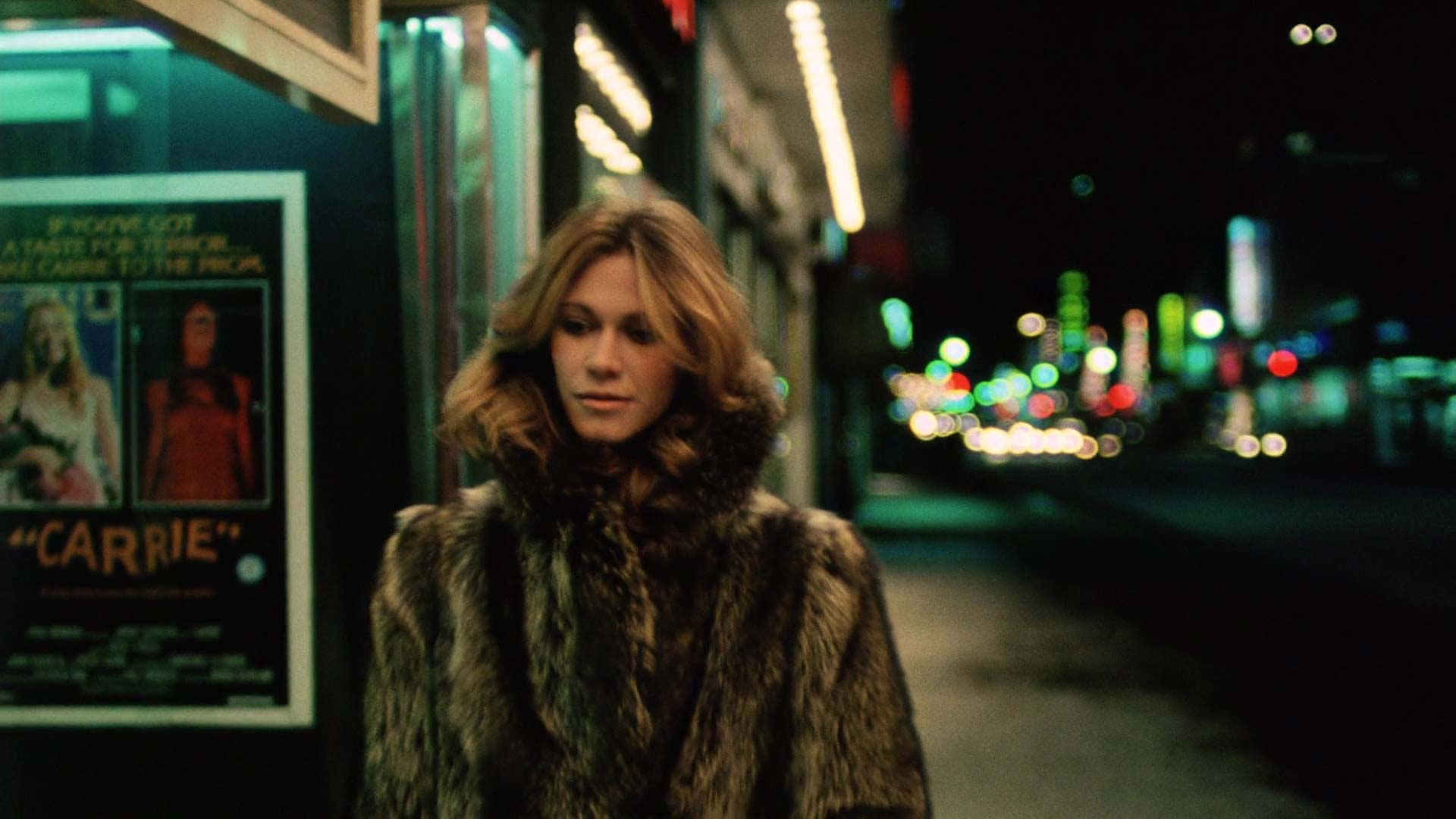
July is a fucking solid month for New Beverly midnights. Two of Cronenberg’s earliest films, Rabid (1979) and Scanners (1981), are playing. These are genuinely astonishing works. I advise you see both. It’s especially critical that you get your ass to the Bev to see Rabid on July 15th. You may have heard things like “OMG, Marilyn Chambers blah blah ’70s Porn Star is in it! OMG! Blah blah weird sex shit blah blah!” and that’s sorta right.
Marilyn Chambers is in the film.
Weird sex shit DOES happen.
But holy hell is that an oversimplification of a film that deftly examines the fluidity of gender, sexuality and physical desire. The eroticism of Rabid, the intimate link between life, sex and death is an entirely unique experience. In 1979, horror films featured women prominently but did not center on them as Cronenberg did. They were mostly victims and certainly not the hub of eroticism or sexual pleasure. While Rabid’s storyline may not platform this, the camera and visuals most definitively do. As the character Rose, Marilyn Chambers orgasms on screen in a way that she never did in any of her adult work. Her ecstasy, directly stemming from a biological accident that saved her life, has opened up an intense sexual need in her that has a physical form and has literally grown from her body. Her hunger is insatiable (yes, I did that) and the way that it affects (and infects) those around her is complicated – both for her and in the way that it is portrayed on a societal level. Do not miss this.
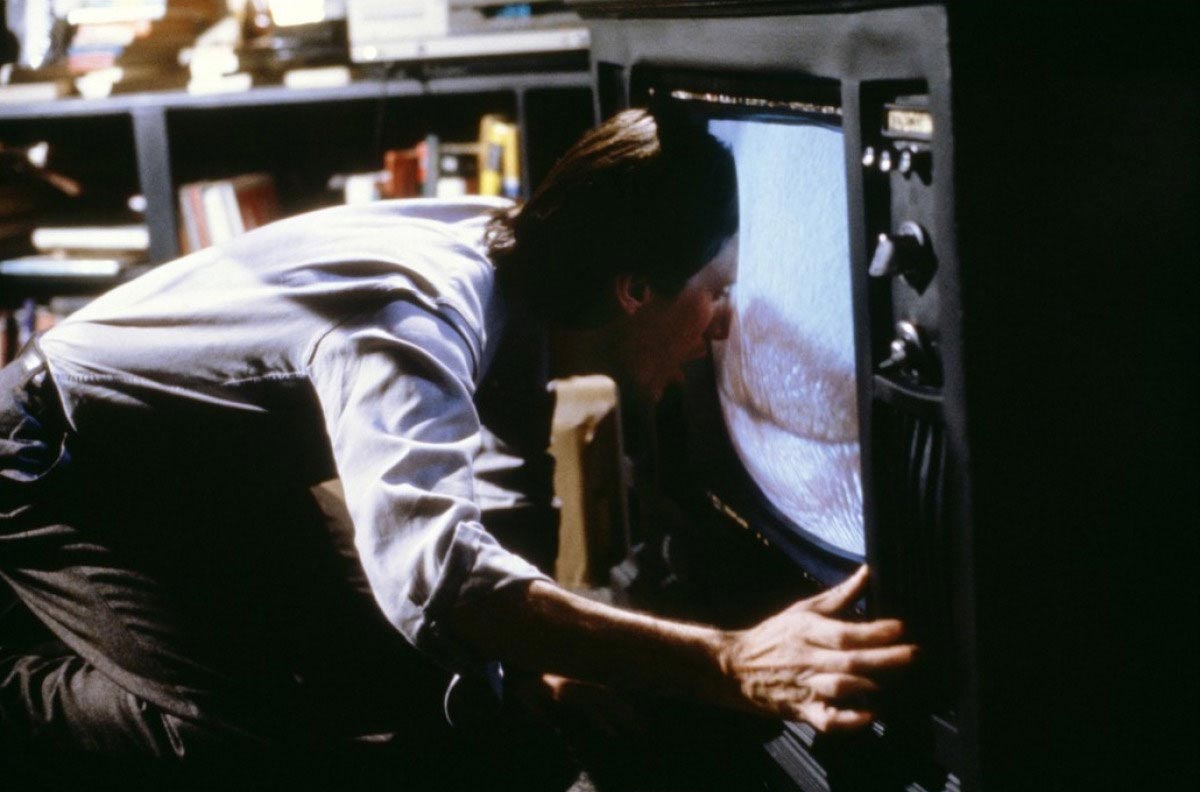
My friend and colleague Kim Morgan has really done a great job of discussing Videodrome (1983), so I won’t go into it too much here. Please read her piece on the New Bev blog because her take (as usual) is truly worth it. Videodrome’s look at technology, the human form and the birth process is unendingly unique. Additionally, this film focuses almost completely on ideas of commodification in relation to female sexuality, a topic Cronenberg returns to time and time again. Scanners may have been the first of Cronenberg’s features to center the physical joining of machinery and flesh, but Videodrome was the one to establish that link as part and parcel of the Cronenbergian Universe. “Long Live the New Flesh” is, at this point, a phrase that has become part of modern cinephile slang, an irony seeing as it was birthed from a film that highly criticizes the adoption of popular culture as canon.
On Saturday, July 8th, The Fly (1986) screens, David Cronenberg’s masterpiece of romance, biology and sacrifice. A “remake” of the Kurt Neumann 1958 original, Cronenberg completely rebuilds the narrative, adding sensitivity and depth to a film that is, for many, a grotesquely nauseating work. It’s impossible not to become emotionally engaged with the story of scientist Seth Brundle (Jeff Goldblum) and his girlfriend Veronica Quaife (Geena Davis) as their relationship evolves along with his scientific experiments. The comingling of emotion, science and passion is what makes Cronenberg’s work here so strong. He takes these topics that would otherwise not be intertwined – sex/love/passion coming from a high-octane “feelings” realm and medical/science/biology from the no-nonsense “just the facts” arena – and marries them, placing them into a partnership of imperfect perfect harmony. This partnering comes up time and time again, highly present in films like Dead Ringers (1988) and even A Dangerous Method (2011).
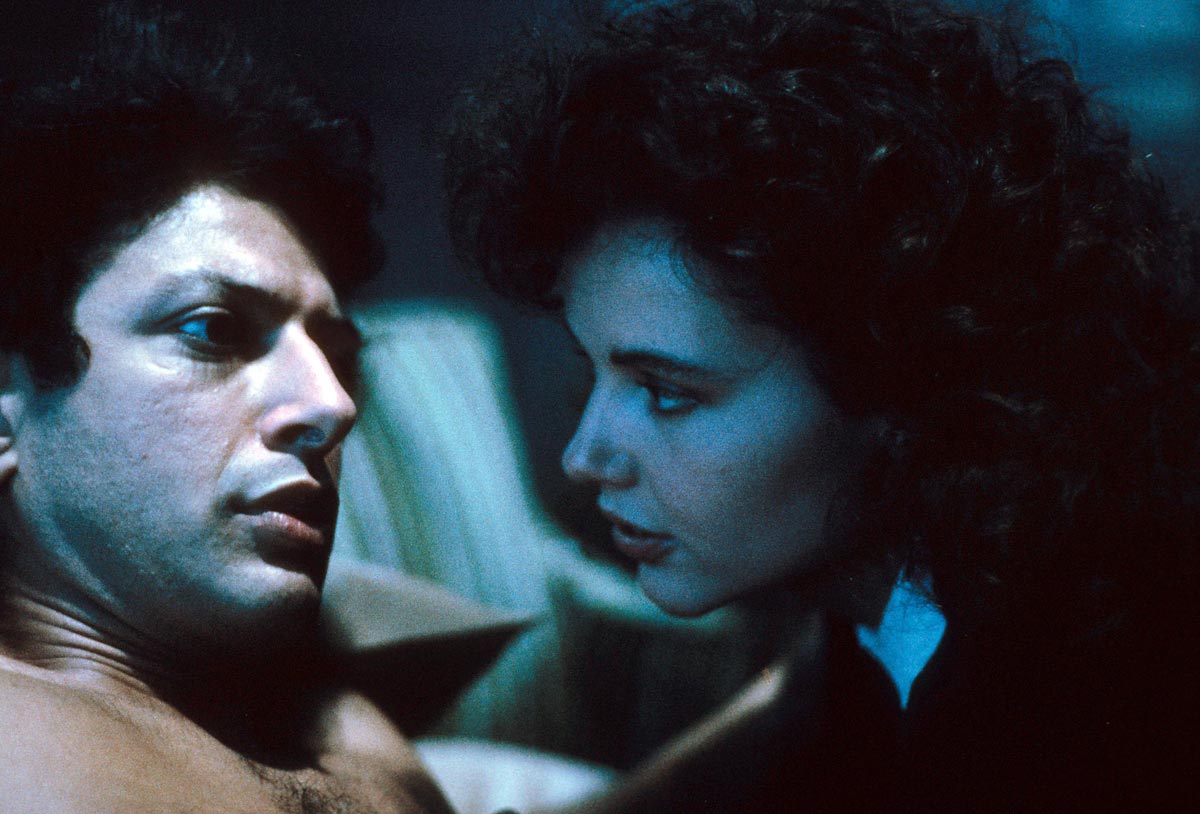
As a filmmaker and artist, one of David Cronenberg’s greatest skills is being able to cause an audience to delight in his images and narratives and cringe with disgust at the same time. About 20 years ago, I took my first horror film class while studying abroad in England. It was there that I discovered Cronenberg because my insanely fabulous teacher decided that the class was only going to watch Argento and Cronenberg. I was a young woman, in a foreign country, and I spent the majority of our screenings with my knees up to my chin, my sweatshirt tightly around my head, biting the edge of the hood.
“GODDAMNIT, JEREMY IRONS. ARE YOU SERIOUS?” I remember thinking. But it wasn’t that Dead Ringers (1988) frightened me. And it wasn’t that The Brood (1979) or The Fly (1986) gave me nightmares. It was something very different. What made me pull my baby-film-fan knees to my face and rock myself back-and-forth in a state of gross-out and ecstasy was, I soon discovered, a complex reaction that Cronenberg skillfully utilizes within his art to express more important ideas. It is the concept that philosopher, feminist and groundbreaking psychoanalyst Julia Kristeva discussed – the idea of the abject.
While many recognize Carol J. Clover as the leading woman to have changed feminist horror theory with Men, Women and Chainsaws, Julia Kristeva’s work, The Powers of Horror: an Essay on Abjection, truly ripped shit apart. LITERALLY. Abjection is pretty complex but it’s what every Cronenberg film is centered on. Due to his interest in ideas of disease and intermingling of the body/technology and the birth/death/sex process (all body fluids delightfully included), the abject is front and center in the Cronenberg-verse. Abjection is that fuzzy place where identity becomes confused and there is a physically violent reaction to that confusion. This reaction usually involves shit, vomit, piss, blood, pus, gagging, and some kind of human physiological reverberation to the concept that commonly accepted identities have shifted. In Cronenberg, this is his ENTIRE UNIVERSE. Kristeva writes, “It is thus not lack of cleanliness or health that causes abjection but what disturbs identity, system, order. What does not respect borders, positions, rules. The in-between, the ambiguous, the composite.” And let’s get real – what character in which Cronenberg film actually “respects borders/positions/rules”? Cronenberg cinema is the cinema of abjection.
Whether it is obvious or not, the idea of identity or identification is huge within the Cronenberg world. Traditional thinking prompts would be: robot? human? Both? monster? Woman? Genderless? What are the identities of these characters that I am on this journey with? I am being asked by the film to go on these insane horror explosions and…I don’t even know whom I’m traveling with! That’s part of the abject. The characters are in that neither/nor space and who/what identity. As Kristeva notes, “The one by whom the abject exists is thus a deject who places (himself), separates (himself), situates (himself), and therefore strays instead of getting his bearings, desiring, belonging, or refusing…Instead of sounding himself as to his “being,” he does so concerning his place: “Where am I?” instead of “Who am I?” For the space that engrosses the deject, the excluded, is never one, nor homogeneous, nor totalizable, but essentially divisible, foldable, and catastrophic.” Thus the constantly changing universe and flashbacks in The Dead Zone (1983) serve to regularly destabilize Johnny Smith (Christopher Walken) and refuse him any entrance to the “normalcy” that he so craves. Rose (Marilyn Chambers) in Rabid is in a constant state of both terror and identity confusion throughout the film due to her post-coma, um, gifts. She spends the film “straying” (per Kristeva) because she cannot get her groundings.
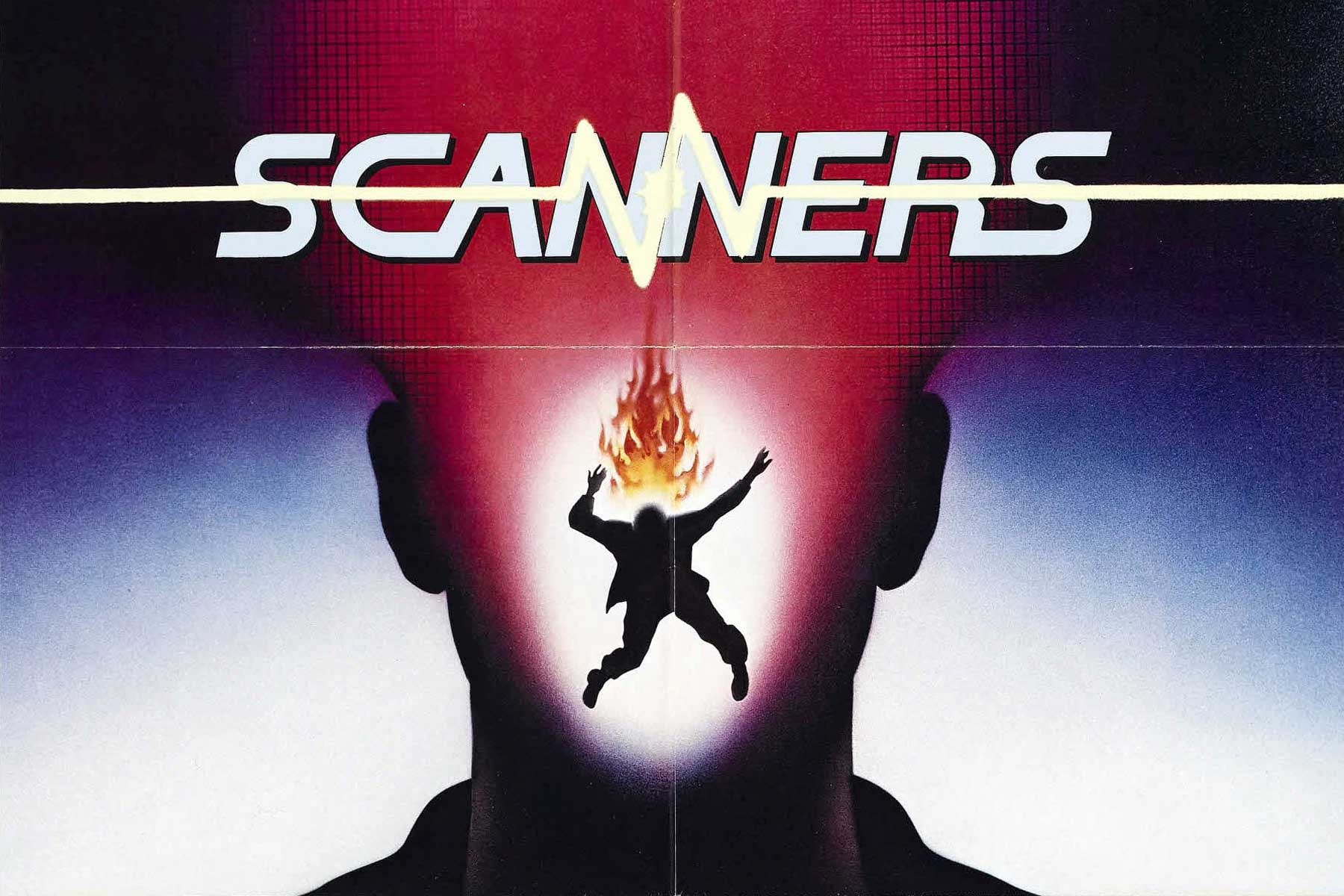
This is also the entire cast of characters of Shivers, and what about Scanners (1981), playing at the New Bev on Saturday July 22? That entire film is about place, identity confusion, super secret organizations and, well, great special effects and a GREAT story, too. But essentially, Cameron Vale (Stephen Lack) is the ultimate location of the abject. He is identity-less, location-less and loaded to the eyeteeth with all the things that create disruption. Firstly, the homeless Cameron is balls-out crazytown. Unstable, he is sure of it. He regains clarity (thx forcefully injected drugs) and is informed that his brand of crazy is a “freakish form of ESP” (hey Cameron, you’re not crazy, you’re just a freak, ok bb?). Not only this but also its extra powerful and needed to help takeover the world and fuck some shit up. Um, what? Scanners is really great. While my synopsis barely touches the narrative surface of the actual film, what it does look at is the way that Cronenberg uses this concept of the body as a container or power receptacle and the ways in which that is heavily tied to these ideas of self-hood or borders.
Kristeva states “The body’s inside…shows up in order to compensate for the collapse of the border between inside and outside. It is as if the skin, a fragile container, no longer guaranteed the integrity of one’s ‘own and clean self’ but, scraped or transparent, invisible or taut, gave way before the dejection of its contents.” What is often termed as body-horror and appears in the Cronenberg Universe in the form of blood, pus, brain matter, and any other gooey-bodily-produced “gunk” is not exactly body horror as much as it is horror of the body. Here is a physical package that is out of control, that cums, bleeds, and excretes in ways that we cannot fathom, mentally. It is that horror, that disbelief at physicality and that mental desire to reject that gross unruly identity that is one of the most beautiful and challenging parts of Cronenberg’s horror films. The Brood exhibits it with birth and feminism, working that magic with murderous Teletubbie-looking things and vaginal secretions all over the place. Crash (1996) is about sex and death in car crashes. You do the math. eXistenZ (1999) graphically shows orgasmic videogame consoles attaching themselves to characters’ anatomy.
Horror is all about the ways in which borders are destroyed, melted down, played with. It is centered on the ways that we react to our genders, sexualities, and intimate identifications, being pooled or jellied. Cronenberg ignores the extensively out-of-date concept of binaries due to his love for science. In the scientific world, some female animals change their sex to male. Some males have the babies. Why the fuck not? Why wouldn’t we allow for more permeable membranes on physicality, social comment, technological fantasy and eroticism? In the beginning of his career, David Cronenberg thought he would have to move to Hollywood to get his films made. I am personally thrilled to bits that he stayed in Toronto. The work that he has done, the feminism, intellectualism and horror-insight that he flooded into his work would never have been allowed here in the good ol’ US of A. Whether you see these films as just good fun or are able to examine the critical meaning of Scanners, they are some of the best films that have ever, and will ever, be made. David Cronenberg is one of the absolute greats, a real filmmaker, and pure fucking genius.

